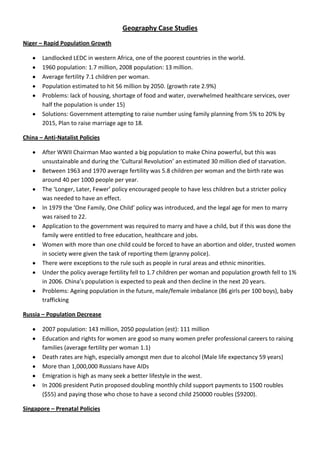- Niger has experienced rapid population growth, from 1.7 million in 1960 to an estimated 56 million by 2050, putting strain on housing, food, water, and healthcare. The government is attempting to increase family planning and raise the marriage age to address these issues.
- China implemented its one-child policy in 1979 to reduce population growth from 5.8 children per woman to 1.7 currently. This has led to issues like an aging population and gender imbalance but has allowed economic development.
- Drought in Australia has led to reduced water flows and reservoir levels, forcing towns to lose population as farming becomes impossible and water restrictions are imposed in cities.












